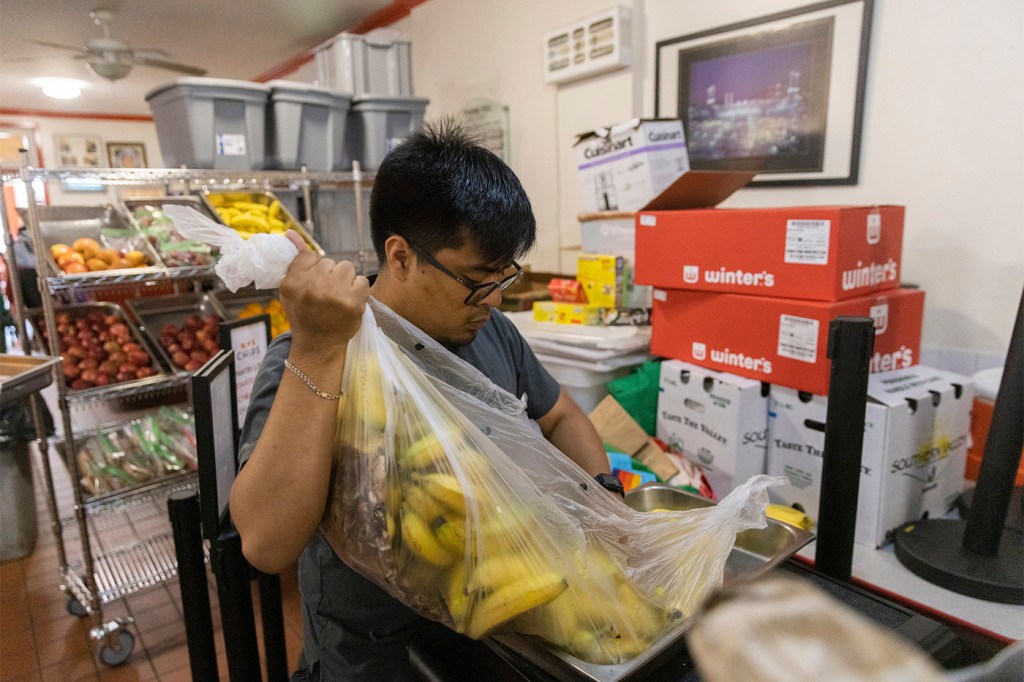Coupling food pantry access with primary care offers new recipe for preventative medicine, Northeastern research says
“Primary care partnerships with food pantries help stabilize health outcomes,” says John Lowrey, assistant professor of supply chain and information management at Northeastern University.

In a world awash with mass-produced, highly processed high-caloric food, the cheapest option is often an unhealthy one. Add rampant wealth inequality, mix in the many factors plaguing the U.S. health care system, and you have a recipe for obesity and other diet-related illnesses.
But a new study from Northeastern University shows that adding regular food pantry access to primary clinical care can stop the progression of some diet-related chronic illnesses.
“Partnerships with food banks could be the next preventative medicine model,” says John Lowrey, assistant professor of supply chain and information management at Northeastern’s D’Amore-McKim School of Business and Bouvé College of Health Sciences. “Primary care partnerships with food pantries help stabilize health outcomes.”

Approximately 44 million Americans are food insecure, meaning they don’t have enough food to eat or don’t have access to healthy food.
At the same time, two in five American adults, and one in five American children, are obese.
To look into both issues, Lowrey partnered with the Mid-Ohio Farmacy, a collaboration across the Mid-Ohio Food Collective, a network of over 650 affiliated food pantries and a large federally qualified health center. The health center offers primary and preventative health care services across eight free clinics that are co-located with the food pantries. Patients were screened for food insecurity during their clinic visit and, if positive, were referred to the Farmacy.
Featured Posts
Lowrey and colleagues found that, overall, those who made at least one visit to the food pantry a year after referral stabilized their body mass index. However, patients who did not visit the pantry over that time period saw their BMI increase, according to the research.
There is also a possible “dose-response relationship” between the frequency of food pantry visits and health benefits,” Lowrey says. Those who visited the food pantry at least 11 times in the year and had multiple comorbidities had a greater reduction in BMI and reduction in blood sugar levels, according to the research.
“We find that they have the greatest change in health outcomes,” Lowrey says.
Finally, the data suggest that these regular food pantry users with comorbidities changed their behaviors following referral to emphasize their health.
For one, they visited pantries more consistently and traveled further to visit pantries, for instance, and visited more food pantry locations.
“The way they were using the pantry system suggests more “food is medicine” behaviors, Lowrey says.
The food insecure patients who used the pantry most often also changed their health care visits.
Lowrey explains that research has found a “treat or eat” tradeoff, where the food secure generally visit health care providers earlier in the week than the food insecure. This suggests the former group can better prioritize health care needs when they don’t have to worry about food.
But in the study, the pattern shifted following referral.
“By looking at clinic visit patterns by food security and by compliance status, we see that compliers after referral have visit patterns that are more suggestive that they are like food secure patients,” Lowrey says. “This suggests that patients are prioritizing their health care visits earlier in the week, even if these visits compete with occupational demands.”











